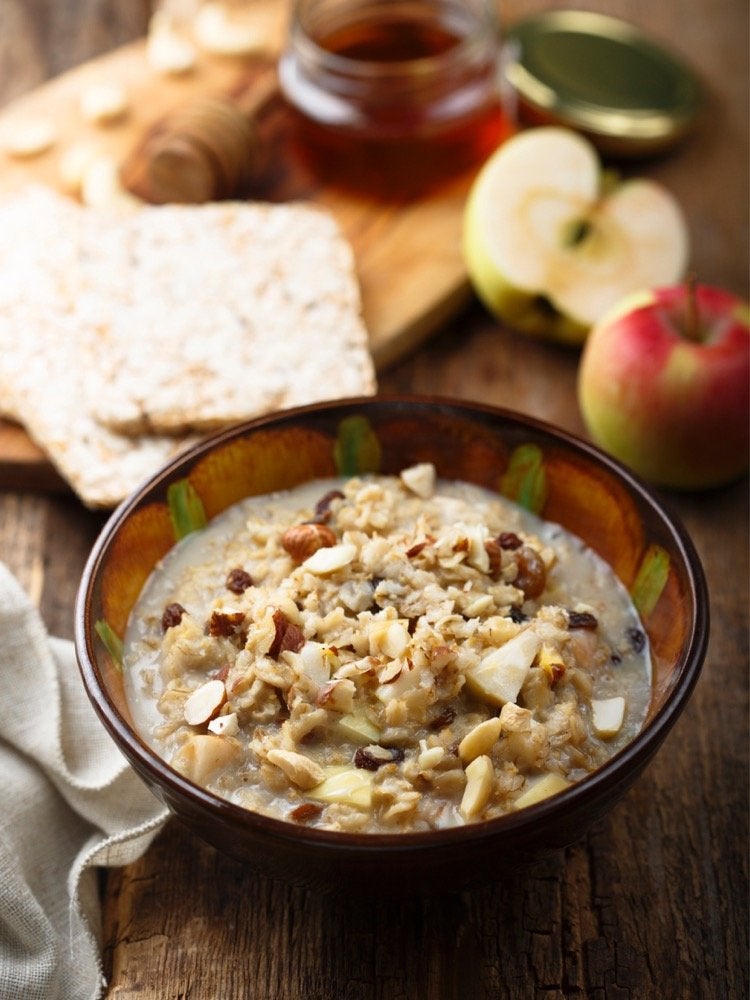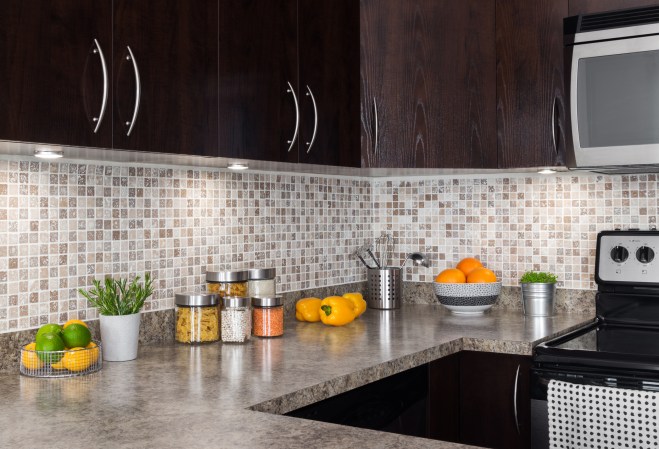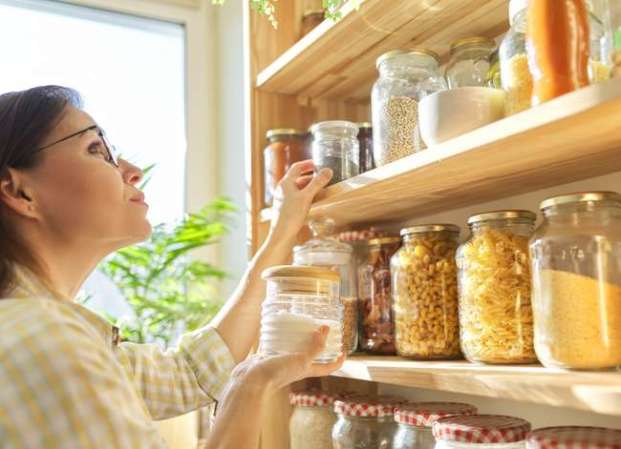We may earn revenue from the products available on this page and participate in affiliate programs. Learn More ›
Mindful Food Prep

It’s time to go back to basics in many ways—spending more time with family and cooking at home more often. It’s also a time to rethink how we live, interrogating mindless consumption and our throw-away culture. There’s no better place to start a new routine than your kitchen, where changes in grocery habits and eating patterns can boost your immune system, improve your mood, and reduce waste and extra purchases. Our strategies are easy to integrate into your daily routine—and will pay dividends in time and money saved, and satisfaction multiplied.
Cook for the Week

One of the best ways to stretch your groceries, trim your bills, and stay healthy is by taking time for meal prep at least one day a week. Choose one or two easy, one-pot recipes and cook a big batch of whole grains (rice, quinoa, barley) to go with your yummy main dish. If you eat meat, grill chicken or fish to pair with salad or savory veggies on alternate days.
Mix and Match Foods

If eating leftovers leaves you cold, get creative with the foods in your fridge. Instead of hot oatmeal, make a hunger-erasing cold muesli with raw oats, grated apple, cinnamon, honey, a dash of lemon juice, and milk (or milk substitute). Add fruit to savory dishes, like chicken salad with apples and grapes. And use plenty of herbs and spices to enhance flavor, fight inflammation and help you feel full.
Make Stock

Got food scraps? Vegetable peels and leftover chicken, turkey, and ham can make delicious broth and stock. Bone broth has also received a lot of attention for its health properties, including digestive and skin benefits. There are tons of recipes available online, but it all comes down to simmering veggies, meat scraps and bones in water for one to four hours—or longer. The longer you cook your stock, the more concentrated it becomes and the easier it is to store.
Raid Your Pantry

Many of us have more food stashed away in our pantry or freezer than we realize. Before heading to the store, go shopping at home. Then search the internet for recipes that combine the ingredients you already have in novel ways. Fortunately, there are plenty of online tools and apps to help you get creative with pantry ingredients, including Super Cook and Epicurious’s Recipe Finder.
Use Grandma’s Cookbook

Old-fashioned recipes were often intended to serve calorie-dense foods to larger families. While we don’t need quite the same calories these days, you can create modern takes on family favorites like mac and cheese, chicken and dumplings, and shepherd’s pie thanks to a large community of food bloggers who readily share their remixes of old favorites. This may also be the perfect time to ask family and friends to share secret recipes they’ve been hoarding and build your own cookbook.
Learn How to Can and Preserve

Another old-fashioned necessity that is making a comeback is food preservation. Unlike chemical preservatives, canning, pickling, drying, fermenting, and freezing foods are natural processes that extend shelf-life and seal in nutrients for the long haul. New to food preservation? Just check out the National Center for Home Food Preservation’s website. You’ll even find free lesson plans to get your kids involved for a delicious, hands-on science class.
Plant Seeds

Garlic, peppers, squash, strawberries, tomatoes—these foods all have one thing in common. They are easy to grow at home, using the seeds you save from grocery store buys. Learn how to grow fruit and veggies from salvaged seeds, and start a green revolution in your kitchen. You will save money in the long run, and transform a single purchase into a full harvest. Look for heirloom and non-hybridized fruit and veggie varieties, as these seeds are the most robust.
Drink Water

You can make your groceries last longer without any cooking—just run the tap instead. Keeping well hydrated throughout the day cuts down on cravings, as the body sometimes confuses thirst and hunger cues. If you’re concerned with water safety, look for home water filtrations systems that seriously cut down on heavy metals, minerals, and microbes.
Organize Your Freezer

Many food items are freezable—if you have enough freezer room that is. Take stock of your frozen goods and get rid of anything that’s been stored for a year or more. Label containers with tape and a permanent marker, including the name of the food and the date it was frozen, so you know what’s inside and when it should be eaten by. Then fill your freezer with healthy choices, including frozen veggies, fruit, cooked grains, soups, and casseroles. This way, you’ll reduce trips to the store and ensure nutritious meals when time is short.
Invest in a Pressure Cooker

If making dinner is a major hurdle, reduce the time it takes to cook by investing in a pressure cooker. These sealed pots use heat and steam to slash cooking time and meld flavors for fast, easy, one-dish meals. A popular device that has taken off in recent years is the Instant Pot (available on Amazon), which gives you succulent meat and veggies in less than an hour. It also doubles as a rice cooker, yogurt maker, steamer, and more.
Host a Moveable Feast

As long as social distancing measures are still in place, it can be hard to invite friends over for a potluck dinner. So take the feast to others by hosting a “progressive dinner” or moveable feast. In the old days (before Covid-19), these community meals were eaten in different people’s homes, course by course. These days, you can simply leave a sealed, sanitized food container on your neighbors’ doorstep, to share the results of your cooking and baking endeavors—and make groceries go further for more people too.
Make the Most Out of Your Groceries

When it comes to saving money on groceries, how you consume your food is just as important as what you buy.















